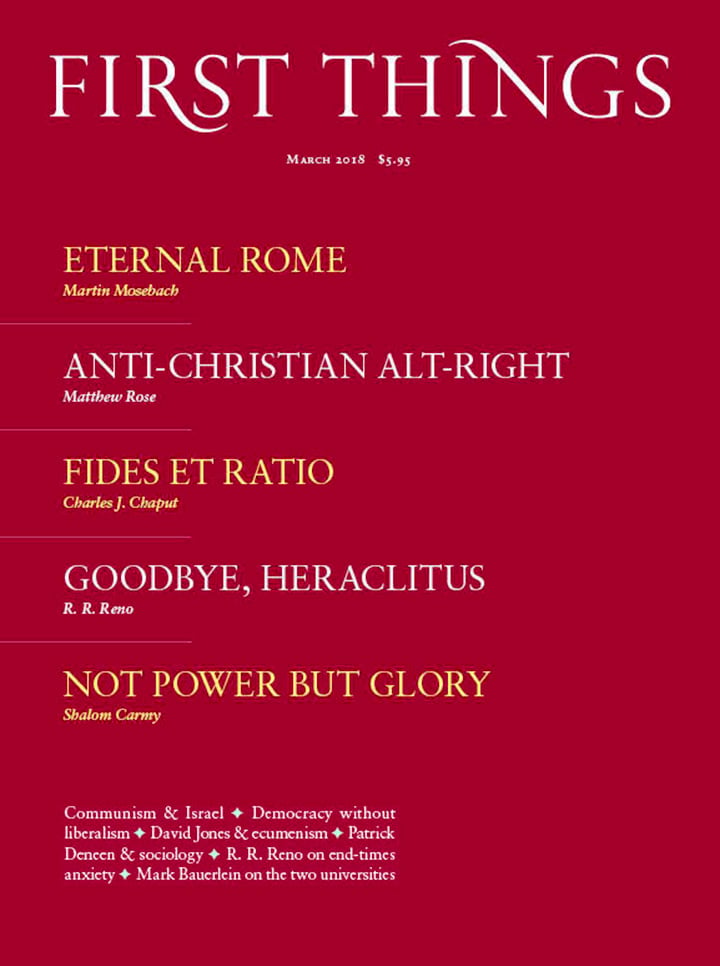In January, news came out that Emory University received a $400 million gift from the Woodruff Foundation. All of it will go to healthcare and research. That’s $100 million more than Michael Bloomberg’s foundation gave to the school of public health at Johns Hopkins in September 2016. Emory’s school of public health is ranked only six spots behind Hopkins’ (no. 1), though it opened relatively recently in 1990. You can sense the energy when you walk into the building and mingle with the 1,300 or so master’s and doctoral students and 168 faculty members.
That part of the campus has an entirely different feel from the side where I teach my classes. The older areas where the liberal arts are housed have a nice, bucolic aspect—a grass quad, lovely but modest marble buildings dating back a century, and professors and students alone and in pairs, laden with books, passing in and out of the library.
Up on the Clifton Corridor, as it’s called, construction crews are finishing up the new hospital, a mammoth project in marble and glass. Across the way are the Emory Clinic and the old hospital, and further along the medical school and children’s hospital, the med school library, public health, and the school of nursing. Cross another street, and you reach the Centers for Disease Control and Prevention, a twenty-first-century metropolis all its own, surrounded by security walls and guards and containing every pathogen known to science. Dozens of Emory public health students go to work there every year after they graduate. My sister earned a PhD in epidemiology and ended up for a time in the CDC’s infectious diseases/blood division. It is an international hub of the medical-industrial complex.
All this growth and output is a fabulous testament to the American research university. College leaders talk about higher education in the United States as the envy of the world because, well, look around. When I started at UCLA in the late seventies, the campus was more or less divided by disciplines. North Campus was arts and humanities, the film school, and the sculpture garden (Serra, Rodin, Lipchitz, Henry Moore, Calder). South Campus was math, engineering, and the hospital. At the time, much of the south section was parking lots, tennis courts, and open space—but not any more. While North Campus hasn’t much changed, South Campus is now a bustling biomedical wonderland, the open areas filled in by the Mattel Children’s Hospital, David Geffen School of Medicine, Semel Institute for Neuroscience and Human Behavior, Doris Stein Eye Research Center, Ronald Reagan Medical Center, and more. The buildings have no collegiate air, but they reek of inquiry and advancement and the common good.
Go to other research universities, and you will see the same trend. For a humanities professor, it’s a bit disorienting. The gargantuan construction sites and mega-donations don’t square with our impression of higher learning in decline. We look at the curriculum and wince at how low the bar of study has sunk. We don’t know what to do about our colleagues’ enthusiasm for pseudo-philosophical notions such as intersectionality and queer. The things that matter to us—the parables of Jesus, Dryden’s couplets, the gloomy opening of Act 3 of Tristan, Kojève and the dialectic of desire—don’t seem important to the field. This is to say nothing about faculty disdain for most things conservative. We can’t even argue about it anymore. We’re too discouraged.
Last month in the Chronicle of Higher Education, Christian Smith caught the mood of lingering traditionalists and let loose. His essay was called “Higher Education Is Drowning in BS.” The subtitle extended the impact to all of America: “And it’s mortally corrosive to society.” In a series of paragraphs beginning “BS is . . .,” Smith enumerates the corruptions and deceptions of academic practice. They include:
- academia’s “loss of capacity to grapple with life’s Big Questions”;
- its slide into jargon and hyperspecialization;
- “the relentless pursuit of money and prestige”;
- the publish-or-perish system, which only yields “a raft of books and articles that contribute little to our knowledge”;
- and the “grossly lopsided political ideology of the faculty of many disciplines.”
It’s an earnest cry of the heart, and Smith doesn’t know how much longer he can trudge through the manure and “retain my sanity and integrity.”
Many of us feel this way. But when you walk along the Clifton Corridor at Emory or through South Campus at UCLA, when you see people lining up outside the Emergency Room, many of whom appear to be working class or poor—beneficiaries of the research enterprise, not working parts of it—you can’t help but think, “None of that applies to this.” And it’s not a fifty-fifty split between the decadent liberal arts and the vibrant STEM fields. The resources and money and popularity of the one dwarf those of the other, both from top down (donors and government research support) and bottom up (student demand). Compare the budget of the National Science Foundation ($7 billion) with the budget of the National Endowment for the Humanities ($150 million), or consider the fact that university expenditures on humanities research and development are a tiny 0.6 percent of expenditures on science and engineering R&D. As for the students, more than one-quarter of college freshmen aim for a major in a health field, while only one in ten opts for anything in the arts and humanities. The numbers suggest a new reality. Universities are large STEM research centers with small liberal arts colleges attached to them.
All of this puts our dismayed impressions of a university in ruins in perspective. Look at the problems through the eyes of a college president. Yes, he knows that some embarrassing things take place in Women’s Studies programs, and he certainly doesn’t want a radical feminist to represent the school to alumni and the government. We would like him to take action when these and other “Studies” units abandon scholarly norms and become activist projects of the left.
But, he thinks, is it worth the hassle? Fewer than one in a thousand undergraduates in the U.S. major in Women’s Studies, and the cost of those professors is insignificant in the overall financing of a school. When in 2016 someone wrote pro-Trump messages in chalk on Emory’s grounds, a few dozen students, appalled at what they believed to be Mr. Trump’s sexism and racism, complained to the leadership. The president sympathized with them, leading some commentators to wonder why he didn’t just tell them to grow up. Perhaps, though, he had a meeting with architects to review multimillion-dollar plans for a new research building.
The costs and benefits must be kept in mind. A few years ago, Gilead Sciences and Royalty Pharma agreed to give Emory $525 million after the university’s researchers developed a new AIDS drug. Emory took a lead role in 2014 in the study and treatment of the Ebola virus. It has a longstanding relationship with the Carter Center, which received contributions totaling more than $33 million in 2016. (President Carter has been University Distinguished Professor since 1982.) We can’t blame campus leaders for softening up on the “values” side of campus when, relatively speaking, so little is at stake.
The intellectual corruptions of higher education are real, but they affect a shrinking part of the institution. Recently, Public Discourse featured an essay by Stephen J. Heaney entitled “It Stinketh: On the End (and The End?) of the Modern University.” It makes familiar complaints of progressivist coercions and the distortion of scholarly values. “Our students walk on eggshells,” Heaney writes, “waiting for the next moment of oppression to happen, waiting to release their next wave of outrage.” In truth, it doesn’t happen often, certainly not in the research labs. For most students and professors and administrators, the preoccupations of activist students are small irritants in an otherwise well-functioning and well-funded venture.
Something has been lost, to be sure: a strong liberal arts formation. Civilization is no longer an object of study, an ambition for today’s inquisitive youth. In its place has arisen a scientific society, especially a biomedical one, that nobody questions and that has all the unspoken certainty of the Church Fathers in the thirteenth century. Instead of speaking of the destruction of the liberal arts, we should talk of their replacement.
I think many college presidents agree with much of Christian Smith’s diatribe, but they have an alternative method of maintaining higher education. Instead of upholding humanistic standards, they leave the rotting zones alone and back the winners. Don’t waste time with lost causes. Go with the activities that everyone approves. Let the decadent sectors run on fumes, a minor cost of doing business. Meanwhile, the American university steps forward as the vanguard of cancer research, the owner and manager of hospitals and clinics, the government’s partner in public health, the supplier of doctors and nurses—our national caregiver.
In Praise of Translation
This essay was delivered as the 38th Annual Erasmus Lecture. The circumstances of my life have been…
Work Is for the Worker
In these early days of his pontificate, Pope Leo XIV has made one thing clear: The responsible…
Goddity
The Nativity of our Lord—born an infant, laid in a manger. It’s an utterly strange story: The…



